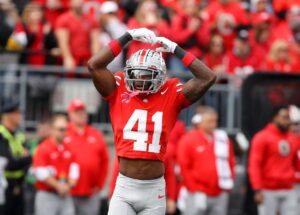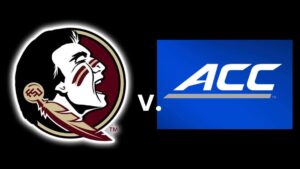West Virginia’s Modern Era of Recruiting
College football fans know recruiting is the lifeblood of their program. Evolving transfer rules increase emphasis on the transfer market, but prep and Junior College recruiting retains prime importance. Despite its centrality to rosters, however, fans often misunderstand the nuances. As a result, we look to provide a brief history of West Virginia’s modern era of recruiting.
Explaining the Rules
What is the Modern Era?
The “modern era” of recruiting encompasses 2002 through the present. Today, three major recruiting databases remain; Rivals, 247Sports (after its 2017 merger with Scout), and ESPN. 2002 is the earliest season featuring reliable, wide-reaching rankings for Rivals and 247Sports. The networks use nuanced variations in their individual and team grading scales.
How are Players Measured?
All three services rate players from zero through five stars. The zero-star designation is reserved for players who never received grades from those services. No players receive one-star designations. Two-star designations have become less common for FBS recruits over the years.
Four- and five-star players are “blue chip” recruits. Because we do not write for any of these three services, we define blue-chip players based on whether they earn a four- or five-star designation from any of these three services.
To further distinguish the quality of players, each of the services grades players according to its own system. Rivals, for example, grades players between 5.2 through 6.1. Four-star players grade out between 5.8 and 5.9. Five-star players grade out between 6.0 and 6.1.
247Sports grades players between 70 and 110. Generally, four-star players grade out between 90 and 97, and five-star players grade out between 98 and 110. 247Sports assigns its own rankings and maintains a “composite” system by which it weighs the ratings assigned by each of the major services.
ESPN grades individual players between 60 and 100. Other players receive no rating. Four-star players grade out between 80 and 89. Five-star players grade out between 90 and 100.
How are Classes Ranked?
Each service fixes a team’s recruiting ranking at the conclusion of the week of National Signing Day. These rankings do not include NCAA transfers, and they exclude late signees. Each team earns a total score, and the teams receive their ranking based on this score. Each service uses a different formula to calculate the total score.
On Rivals, each recruit earns points based on his player score. The top 250 recruits also earn a bonus score based on their respective rank. Because team score is the sum of each signee’s point total, teams with a higher number of recruits can earn a higher score than teams with a better average quality of recruits.
247Sports bases its team rankings on composite ratings. It uses a bell-curve distribution formula where a team’s best recruit earns 100% of his individual score, and its worst recruit earns a much smaller fraction. This places slightly less emphasis on the total number of recruits while providing a bonus to teams yielding multiple top-ranking recruits.
ESPN bases its team rankings on a formula weighing the relative value of individual player scores. Accordingly, ESPN’s formula places more emphasis on the relative quality of recruits and how well a team fills its existing needs than on the quantity of recruits. We do not generally rely on ESPN’s team rankings.
West Virginia’s Modern Era of Recruiting
Team Recruiting Ranking History
As one can see, the team ranking system is far from perfect. A number of factors influence that ranking, particularly the number of recruits. We tend to think that the quality of recruits matters more, especially when we compare current classes to previous West Virginia recruiting classes. Why? Over the past few years, the NCAA imposed a hard cap of 25 new scholarship players per season. Before that, each FBS team (except for the military schools) only had to worry about the total maximum scholarship count of 85. As a result, teams would recruit volume and see who stuck. In 2003, for example, West Virginia had 45 total recruits.
As a result, when comparing the classes in West Virginia’s modern era of recruiting, we find it useful to include several data points: the number of commitments, the team ranking on Rivals and 247Sports, and the average score for recruits for each of those services. We also identify the Head Coach (either Rich Rodriguez, Bill Stewart, Dana Holgorsen, or Neal Brown) responsible for each class, and the preceding three-year average of wins (not including the year in which the class was recruited).
The Data
| Year | Commits | Rivals Rank | Avg. Score | 247 Rank | Avg. Score | Coach | Win Avg |
| 2002 | 31 | 36 | n/a | 50 | 79.40 | Rodriguez | 6.3 |
| 2003 | 45 | 45 | n/a | 54 | 79.68 | Rodriguez | 4.7 |
| 2004 | 24 | 47 | 4.7 | 38 | 80.42 | Rodriguez | 6.3 |
| 2005 | 32 | 31 | 5.2 | 37 | 80.18 | Rodriguez | 6,7 |
| 2006 | 16 | 53 | 4.7 | 60 | 81.92 | Rodriguez | 8.3 |
| 2007 | 28 | 23 | 5.5 | 24 | 84.15 | Rodriguez | 9 |
| 2008 | 28 | 42 | 4.9 | 49 | 80.95 | Rodriguez | 10 |
| 2009 | 26 | 27 | 5.6 | 24 | 86.43 | Stewart | 11 |
| 2010 | 20 | 27 | 5.6 | 32 | 86.46 | Stewart | 10 |
| 2011 | 21 | 47 | 5.5 | 52 | 81.79 | Stewart | 9.7 |
| 2012 | 29 | 48 | 5.6 | 35 | 84.79 | Holgorsen | 9 |
| 2013 | 26 | 25 | 5.4 | 30 | 84.87 | Holgorsen | 9.3 |
| 2014 | 22 | 45 | 5.6 | 39 | 84.12 | Holgorsen | 8.6 |
| 2015 | 21 | 33 | 5.6 | 35 | 84.75 | Holgorsen | 7 |
| 2016 | 27 | 38 | 5.5 | 39 | 83.08 | Holgorsen | 6 |
| 2017 | 23 | 51 | 5.3 | 57 | 84.18 | Holgorsen | 6.3 |
| 2018 | 24 | 33 | 5.4 | 35 | 86.40 | Holgorsen | 8.3 |
| 2019 | 21 | 46 | 5.3 | 48 | 85.74 | Brown | 8.3 |
| 2020 | 22 | 29 | 5.7 | 37 | 86.44 | Brown | 8.3 |
| 2021 | 16 | 39 | 5.6 | 35 | 87.14 | Brown | 6.7 |
Deep Diving into the Classes
Some classes are clearly better than others. And, sometimes, the highest-ranking classes can be the most misleading. For example, Stewart’s 2009 and 2010 classes included several players who either never enrolled or quickly departed West Virginia. In 2009, the team ranking (27/24) was inflated by Logan Heastie, Tevita Finau, and Deon Long, three blue-chips who never appeared on the team’s active roster. In 2010, the team ranking (27/32) was buoyed by Barry Brunetti and Jeremy Johnson.
As we noted, however, team rankings become final upon the conclusion of the week of National Signing Day. As such, just as late additions and high-impact transfers do not add to the class strength, players who sign but never qualify or enroll also do not detract from the rankings. In more recent years, of course, non-qualifiers end up having far less impact on recruiting classes. The annual 25-scholarship cap, in fact, penalizes schools for taking risks on non-qualifying players, as the player, upon signing, still counts against that cap.
The Players in West Virginia’s Modern Era of Recruiting
West Virginia has no doubt seen its share of diamond-in-the-rough players hailing from the three-star level (think Pat White, Steve Slaton, and Karl Joseph). But blue-chip designations matter. In West Virginia’s modern era of recruiting, coaches have lured 48 total blue-chip players who have actually enrolled and played in Morgantown. 36 of those have concluded their eligibility. Further, of those 35, NFL teams drafted about one-third of them (several percentage points above the NCAA average during that period).
Of the players who have not yet exhausted eligibility (beginning with the 2017 class), nine (of the 12) of them remain with the team. Those include impact players like Dante Stills, Leddie Brown, Dreshun Miller, Tykee Smith, and Akheem Mesidor. Indeed, in recent classes, the coaches have done a better job hitting their mark on luring, retaining, and developing blue-chip talent.
Blue-Chip Players by Recruiting Year
For reference, we thought it important to identify the number of blue-chip enrollees per class year. For 2021, we include commitments (since the class is not complete, and no players have yet enrolled). Here is that look.
| Recruiting Class Year | Number of Blue Chips |
| 2002 | 1 |
| 2004 | 2 |
| 2005 | 1 |
| 2007 | 4 |
| 2008 | 1 |
| 2009 | 3 |
| 2010 | 3 |
| 2011 | 2 |
| 2012 | 2 |
| 2013 | 5 |
| 2014 | 3 |
| 2015 | 3 |
| 2016 | 5 |
| 2017 | 1 |
| 2018 | 6 |
| 2019 | 2 |
| 2020 | 4 |
| 2021 | 5 |
From the standpoint of the quantity of blue-chip recruits, 2018 stands out as the best year in West Virginia’s modern era of recruiting. Then, 2013, 2016, and 2021 follow closely behind. However, how does that look by average score and team ranking?
| Year | Blue Chip # | Rivals Rank | Rivals Avg | 247 Rank | 247 Avg |
| 2018 | 6 | 33 | 5.4 | 35 | 86.40 |
| 2013 | 5 | 25 | 5.4 | 30 | 84.87 |
| 2016 | 5 | 38 | 5.5 | 39 | 83.08 |
| 2021 | 5 | 39 | 5.6 | 35 | 87.14 |
As it turns out, only one of those top-heavy classes ranked in the top 25. In addition, only two of those classes earn a spot in the top five classes in West Virginia’s modern era of recruiting when measured by the average composite score in 247Sports’ database. When using this measure, the five best classes rank as follows.
| Year | Number of Blue Chips | Avg Composite Rating (247) |
| 2021 | 5 | 87.14 |
| 2010 | 3 | 86.46 |
| 2020 | 4 | 86.44 |
| 2009 | 3 | 86.43 |
| 2018 | 6 | 86.40 |
Interestingly, two of the Mountaineers’ best classes (when weighed by this measure) come in the last two classes. Three of the Mountaineers’ best classes come in the last four years. The other year (2019) ranks sixth in West Virginia’s modern era of recruiting.
What Explains the Difference?
If a blue-chip player has the highest value to a team’s score and average rating, why are there disparities between the number of blue-chip recruits and the average composite rating? The answer is simple. Not all three-star recruits are created equally. There is indeed a big difference between a low-three-star recruit earning a player rating of 80, and a high-three-star recruit earning a player rating between 87 and 89. Indeed, there is a much bigger difference between low- and high-three-star recruits than there is between a high-three-star recruit and the last fifty or so blue-chip recruits.
Over the last few years, in particular, the Mountaineers have signed some solid blue-chip prospects, but they have also signed high-three-star prospects with increasing regularity. Very few signees fall below the 85 mark in the last several classes. That matters a great deal.
What’s Next for the Mountaineers
What comes next is anybody’s guess. It is telling, however, that the classes ranked number one, three, and six in West Virginia’s modern era of recruiting come in the first three classes led by Coach Brown. Further, those classes seem to develop irrespective of win totals, as Brown’s best class comes after the Mountaineers’ worst season since 2013. If the Mountaineers can string together a few winning seasons with the fresh talent Brown has recruited, we can easily anticipate the Mountaineers taking the next step in the evolution of West Virginia’s modern era of recruiting.






